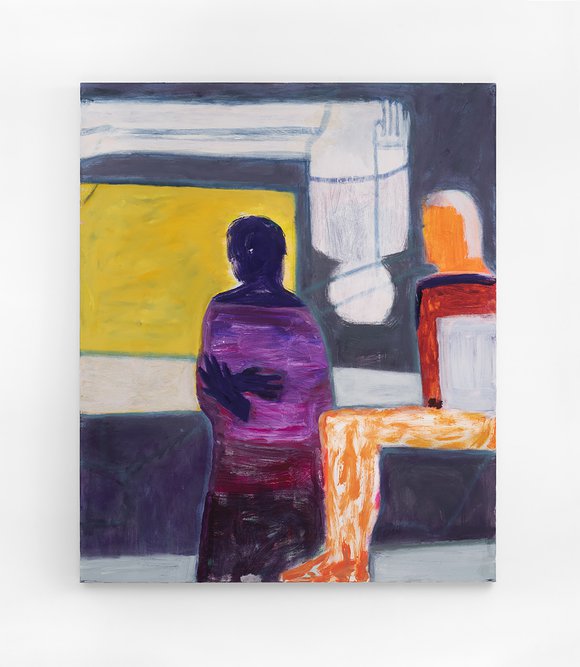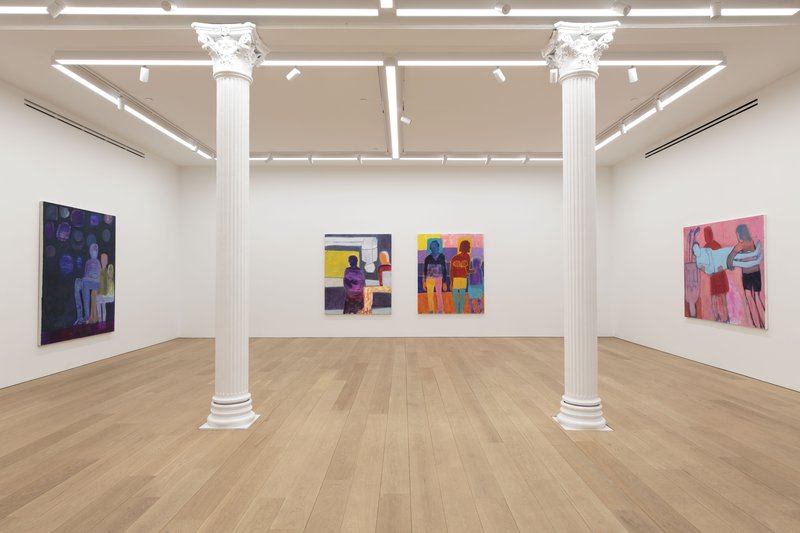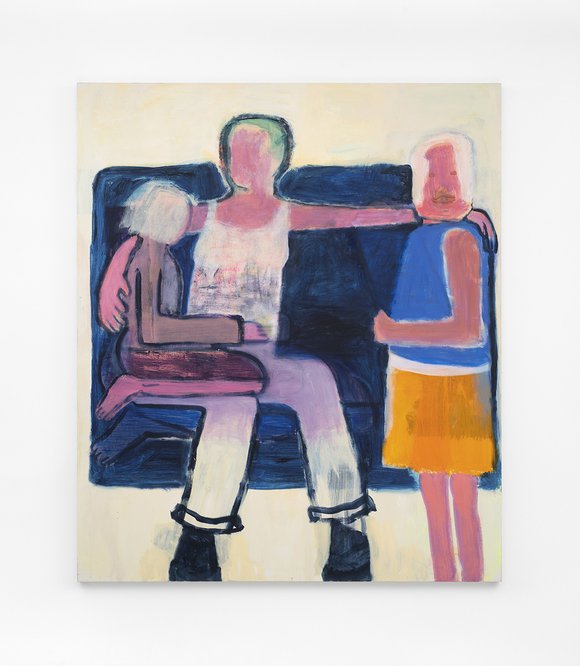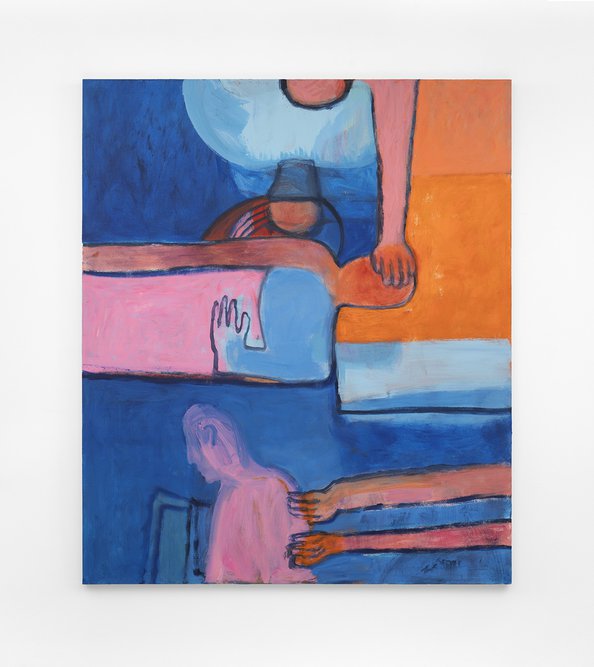Katherine Bradford’s Mother Paintings feel exhaled into being. Not easily or simply, but breathed out from a profoundly interior place. The paintings speak of care, worry, relief, anxiety—the lungdeep breath of loving. The figures populating this series live among slabs of heavy, humid air, hypersensitized in their responses to claustrophobic and caustic atmospheres.
There is so much play between space and compression, filling and emptying, that viewing the show is like being pulled through lungs. Paintings feel like the gulped, choking air of fever dreams; breaths gently meeting and synchronizing between bodies; the rapid, shallow, shrinking inhale of panic; held breaths. But maybe most, they feel like deep breaths exhaled into a changed world.
I saw Bradford’s Mother Paintings at Canada a couple of weeks ago, and they inhabit that rare space held by works that register an unsteady in-betweenness. They eloquently and viscerally explore the limitless subjects of motherhood, while building upon the artist’s painterly language in a way that allows them to address unfathomable changes and losses thrust upon the world in the last year. Bradford has depicted many mothers, children, and families throughout her career, but these eleven large paintings broaden the emotional resonance of her subjects.













